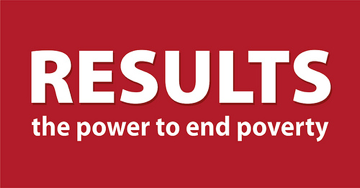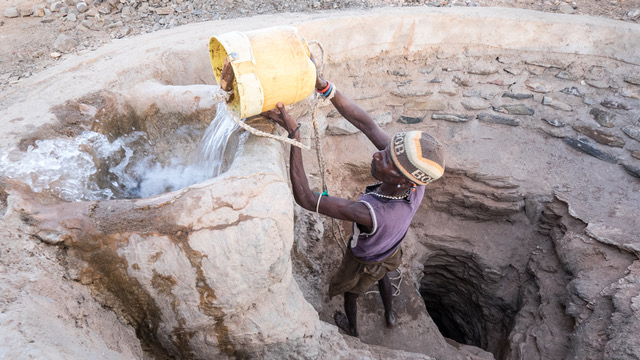photo: ®David duChemin, BOMA project
About the author: Kathleen Colson is Founder and Chief Executive Officer, The BOMA Project.
The woman sat outside the village shop in northern Kenya for two days before she approached the shopkeeper.
“My children have nothing to eat,” she said.
“Why didn’t you speak with me yesterday?” the shopkeeper asked.
“I was ashamed,” she replied.
This encounter occurred several years ago, but there are still many such women in northern Kenya today, and there are likely to be more. In February 2017, the President of Kenya declared a national disaster (1) in 23 arid and semi-arid counties, calling for support from international aid agencies. United Nations (UN) agencies and their partners responded with a flash appeal for US$165 million in order to reach 2.6 million people in need of life-saving assistance.(2)
In Somalia, according to the World Bank, 6.7 million people are in need of humanitarian assistance with an estimated 1.4 million malnourished children under the age of five.(3) Over 680,000 people have left their rural villages in search of food and water, most of whom are women and children.
And in a September 15 2017, article, the Guardian stated that, “The number of hungry people in the world has increased for the first time since the turn of the century, sparking concern that conflict and climate change could be reversing years of progress.”
In 2016, the number of chronically undernourished people reached 815 million, up 38 million from the previous year. The increase is due largely to the proliferation of violence and climate-related shocks, according to The State of Food Insecurity and Nutrition in 2017, a report produced by five UN agencies. (4)
Droughts and dry season are a part of life in the arid and semi-arid lands of Africa (ASALs) but as extreme weather, exacerbated by climate change, devastate rural communities, we need better solutions than the repeated cycles of humanitarian response. The ASALs of Africa are 40 percent of the African continent and in many of these regions, poverty, especially extreme poverty, is getting worse.
As a non-profit organization operating in northern Kenya, we see every day the impact that climate change has on the most vulnerable members of these rural communities, especially women and children. While costly humanitarian aid programs are a necessary short-term answer to save lives, those cycles of response also create a cycle of dependency, treating residents as passive beneficiaries instead of as participants engaged in building the resilience of their communities.
Humanitarian response must be coupled with proven, holistic programs that help people make a meaningful transition from dependence to self-reliance, even in the face of increasingly severe and frequent shocks such as climate change and conflict.
Since 2013, we have been implementing a gender-focused poverty graduation program that operates at the nexus of four of the UN Sustainable Development Goals: eradicating poverty; ending hunger; achieving gender equality; and addressing climate change. The vortex of poverty, the lack of access to education and reproductive rights, the struggle for resources, and continued climate pressure creates a cycle that feeds upon itself. Seen in this light, breaking this cycle by helping women and girls become resilient and self-sufficient, get an education, and achieve agency over their bodies and their futures, becomes a powerful tool in the quest to turn back the ravages of climate change.
Through constant testing and refining, we have adapted the traditional graduation model to the specific circumstances of the arid lands, and to the unique challenges facing the women and children who live there. These last-mile regions have several common characteristics: low population densities and limited infrastructure such as paved roads, mobile networks, public transportation, banks, or microfinance institutions. There are few large employers and the primary source of income is trading in livestock, an increasingly vulnerable money-generating activity that is subject to frequent droughts.
Men can be away from their families for six months or more in search of grazing land and water, leaving women and children back in the village to survive on their own. In these traditional patriarchal societies, women have few options or resources, and share an unequal burden of unpaid care-work, including caring for multiple children, collecting firewood, and water and tending the few livestock that provide milk.
One of our most effective adaptations to the poverty graduation model is our group-based approach, with three women sharing the responsibilities of running a business, reflecting a cultural emphasis on traditional group identity over individual identity. By using the group-based approach for the income-generating activity, the women hold each other accountable and – perhaps most importantly – the business can operate continuously, even when women are pregnant, have just given birth, or need to be away searching for firewood or water. By delivering trainings and coaching at the group level, it also allows us to achieve several cost efficiencies in delivering the program to expensive last-mile locations.
BOMA has found that success has been closely tied to a commitment to local leadership and community consultation. While targeting can be considered an expensive investment in delivering a poverty graduation program, our experience has been that this contributes to the success of the program because we get great community buy-in. From the use of the whole community ‘Participatory Rural Appraisal Process’ to the use of BOMA Location Committees that facilitate inclusion/exclusion to our investment in hiring and training residents from the villages in which we work, the community owns not only the delivery of the program but the success of the participants.
BOMA’s program has a defined exit strategy and graduation criteria that ensures our graduates have achieved the resilience and resources necessary to support their families, send their children to school, cover unexpected expenses and withstand shocks caused by prolonged drought or medical emergencies.
The testing results underscore the importance of these aspects of the program. In a comprehensive 2016 exit survey, after two years in the program, 94 percent of women graduated out of extreme poverty; 98 percent of participants had savings with an average increase of over 1,600 percent with a 167 percent increase in livestock ownership, and a 63 percent decrease in the number of children going to bed without an evening meal.
“Nowadays we have something that belongs to us. Before, it was only the husband who had authority over everything and we didn’t have anything. Now the husband knows that we have something that we own and they also respect us on that.” (Ngurunit, business owner and BOMA program participant).
Over time, as women in our program gain financial stability, they achieve ownership of tangible assets, such as business inventory and livestock, and they start to travel and expand the inventories of their businesses by accessing new markets. They then “pay it forward” by helping other women in their communities learn how to do business and access new resources.
By focusing on women, we achieve an extraordinary return on investment for families, communities, and our donors. Research reveals that women tend to invest their income and savings back into their families and communities,(5) creating an upward cycle of success. A gender-focused poverty graduation program teaches not only new financial skills, but also life skills such as family planning, goal setting, the importance of educating girls, and human rights. The result is an increase in decision-making power and autonomy and resources that expand choice and create a lasting path out of extreme poverty.
The results also, perhaps surprisingly, can point to a way back from the brink of climate disaster.
According to Drawdown, a new work by environmentalist, journalist, and activist Paul Hawken, solution number six for reversing global warming is educating girls. The seventh is family planning.(6) In countries where women’s access to information and options about birth control and maternal choice are limited, the consequences of these two solutions extend far beyond a woman’s immediate environment. There is the savings achieved in maternal healthcare: US$1 spent on contraception saves US$2.30 due to declines in unwanted pregnancies, sexually transmitted diseases, and maternal mortality. There is the increase in productivity from mothers who are not continuously confined by childbirth and child care. There are the benefits to children who receive more of their mother’s attention and resources. And there is the decrease in the carbon footprint, which is radically impacted by a growing population.
As the Gates Foundation also notes,(7) family planning and access to contraception is essential to global health and development. In addition to empowering women with choices, access to voluntary family planning generates long-term benefits to families, communities and countries. BOMA’s program helps women start businesses, grow savings accounts, pay school fees and other expenses, and achieve greater autonomy and control in their own lives, including over their reproductive choices. When women can decide when or if to have children, they can invest more into building the resources they need to feed their families and send their children to school. When girls have access to education, they learn about their choices regarding reproductive options, healthcare and contraception, resulting in children being born into resilient, healthy families, with smaller carbon footprints.
We are at a pivotal moment for our planet. Declining resources and increased pressure on communities and resources due to climate change will lead to an acceleration of migration and resettlement, which in turn destabilizes weak economies and fragile governments, and opens the door to conflict and destruction. At a time when there is growing skepticism about the effectiveness of foreign aid and when governments and humanitarian organizations are experiencing profound cuts to aid budgets, it is more important than ever to support organizations whose efforts converge at the intersection of climate change, gender, and extreme poverty and can deliver cost-effective, proven solutions.
By advocating for the adoption of the graduation model as part of government social protection systems, and by implementing community-driven programs within humanitarian response efforts, we can build the long-term resilience of people in these last-mile regions, enabling them to remain in their traditional homelands and become active participants in their futures, instead of passive beneficiaries of foreign aid.
And by focusing on women and girls, we are activating change-makers who will invest their resources back into their communities, becoming assets rather than liabilities, and catalyzing change whose effects will be felt across the globe.
These goals are bold. They require hard work, and a dramatic paradigm shift in the business-as-usual thinking in the humanitarian aid sector. They demand that we look at people in ultra-poverty not as a burden to be carried, but as potential productive members of society. This vision is audacious and achievable. Now is the time.
Notes
- “Government declares drought a national disaster,” Official website of the President of Kenya, February 10, 2017.
- “UN aid chief urges global action as starvation, famine loom for 20 million across four countries.” UN News Centre, March 10, 2017.
- “A Visit to Refugee Camps in Somalia.” The World Bank, July 14, 2017.
- “’Alarm bells we cannot ignore’: world hunger rising for first time this century,” The Guardian, September 15, 2017.
- “Empowering Girls and Women,” Clinton Global Initiative.
- Paul Hawken, ed. Drawdown. The Most Comprehensive Plan Ever Proposed to Reverse Global Warming (New York: Penguin, 2017).
- “White Paper: A Conceptual Model of Women and Girls’ Empowerment,” Bill and Melinda Gates Foundation, March 2017.

